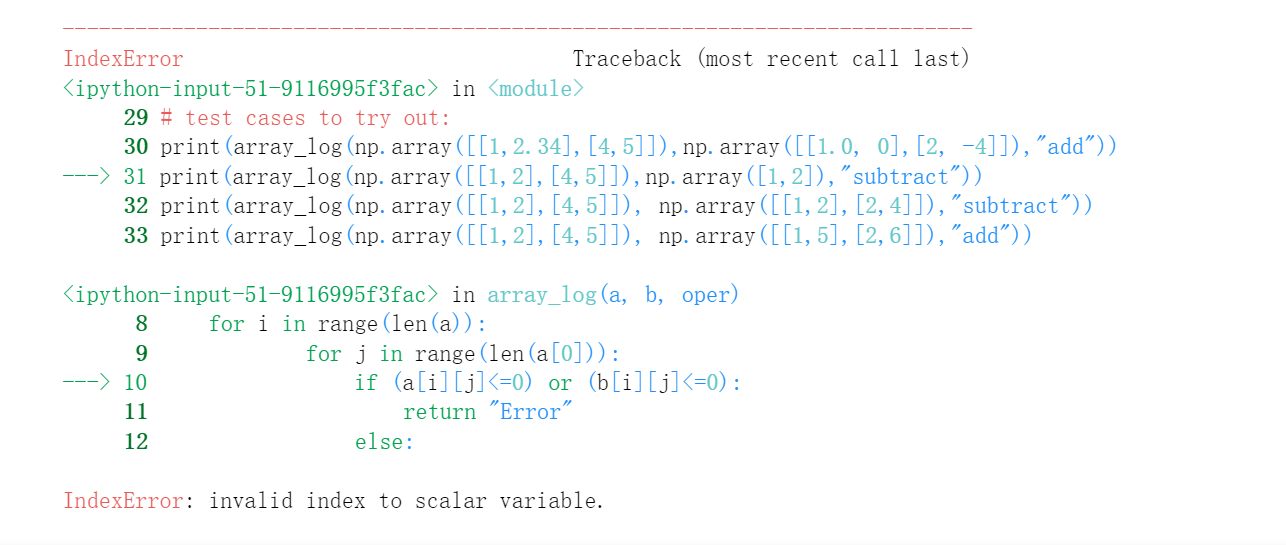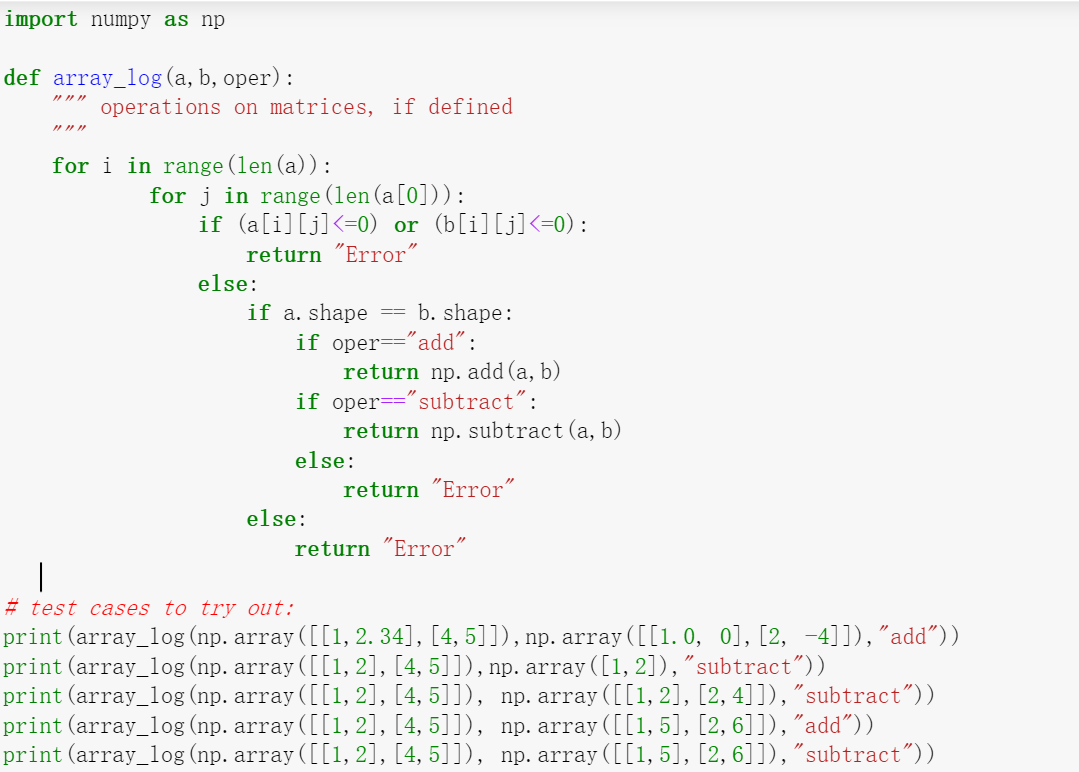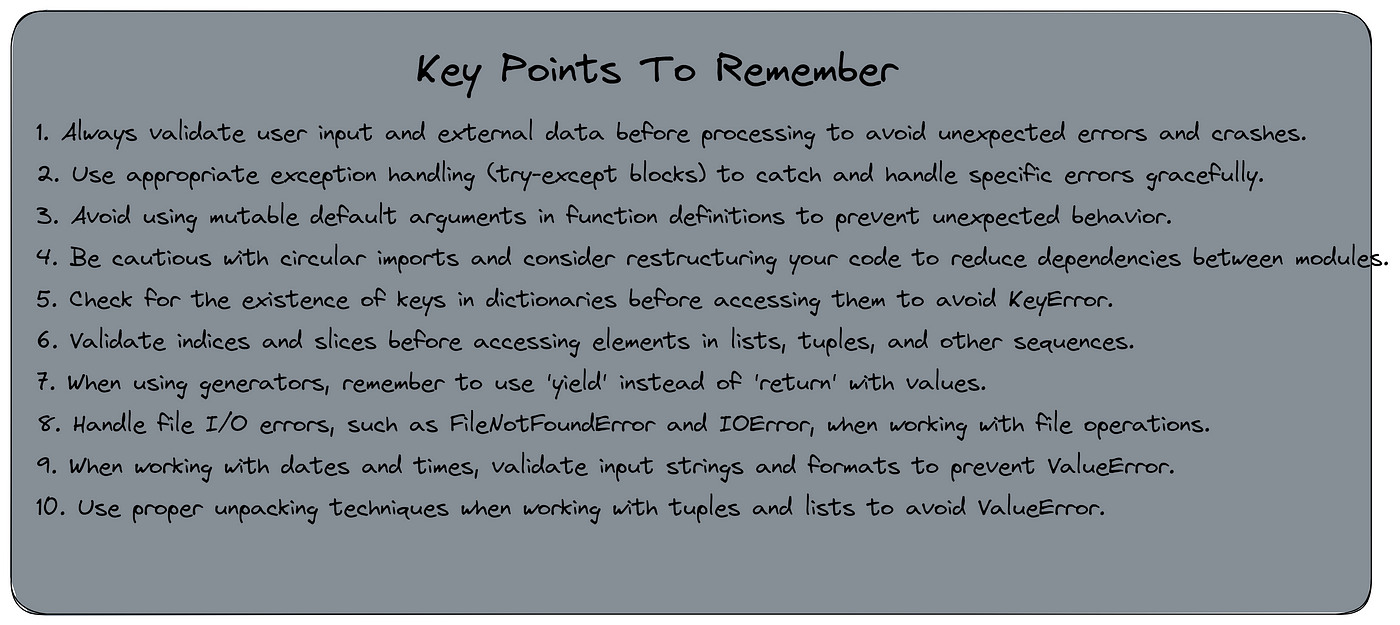Indexerror: Invalid Index To Scalar Variable.
An IndexError is an exception in programming that occurs when an invalid index is used to access an element within a data structure. This error commonly occurs in Python, but can also be encountered in other programming languages.
What is an IndexError?
In programming, an IndexError is raised when a program tries to access an element in a data structure using an index that is outside the valid range. In simple terms, it means that the code is trying to retrieve or modify a value at a location that does not exist or is not allowed.
Common Causes of Invalid Index
There are several common causes for encountering an invalid index error:
1. Indexing beyond the range: This occurs when trying to access an element using an index that is greater than the maximum index of the data structure. For example, if an array has a length of 5, trying to access element at index 6 would result in an IndexError.
2. Indexing with a negative index: In some programming languages, negative indexing is allowed to access elements from the end of a data structure. However, specifying a negative index that is larger than the size of the structure will result in an IndexError.
3. Incorrect data structure selection: Each data structure has its own rules regarding indexing. Using the wrong indexing method for a specific structure can lead to an IndexError. For instance, attempting to index a dictionary with an integer index instead of using a key would cause an error.
Examples of Invalid Index Errors
1. Invalid index to scalar variable:
yolo = 10
print(yolo[0])
Explanation: In this example, the variable “yolo” is assigned a scalar value of 10, which means it is not a data structure that can be indexed. Trying to access an index of yolo will result in an IndexError.
2. Only integer scalar arrays can be converted to a scalar index:
arr = [1, 2, 3]
index = 1.5
print(arr[index])
Explanation: In this case, the index variable holds a non-integer value, causing an IndexError. Array indices must be integers, and using a non-integer value will lead to an error.
3. Output_layers layer_names(i(0) – 1) for i in net getunconnectedoutlayers:
output_layers = […]
layer_names = […]
i = 0
print(output_layers[layer_names[i(0) – 1]])
Explanation: Here, the code attempts to access an element from the output_layers list using layer_names[i(0) – 1] as the index. However, the expression is incorrect, resulting in an IndexError.
Methods to Handle Invalid Index Errors
When encountering an IndexError, here are some methods to handle the error gracefully:
1. Bounds checking: Always ensure that the index lies within the valid range before accessing the element. Use conditional statements or try-except blocks to check for the validity of the index.
2. Validate input: If the index is obtained from user input, validate it to ensure it is within the acceptable range or follows the required format. This can help prevent invalid index errors.
3. Error messages: Provide clear and meaningful error messages to help identify the cause of the error. This can aid in debugging and resolving the issue more quickly.
Best Practices for Avoiding Invalid Index Errors
To avoid encountering invalid index errors, it’s important to follow some best practices:
1. Understand the data structure: Before performing any operation on a data structure, familiarize yourself with its indexing rules. Each data structure has its own set of guidelines for accessing elements, and understanding them will reduce the chances of making indexing mistakes.
2. Input validation: Validate user inputs or inputs from external sources to ensure they are valid indices before using them in programming logic.
3. Error handling: Implement proper error handling techniques, such as try-except blocks, to catch and handle IndexError exceptions. This will help prevent crashes and provide a more user-friendly experience.
Conclusion
The IndexError: Invalid Index to Scalar Variable is a common error encountered in programming when an invalid index is used to access an element within a data structure. This article has explained the concept of the IndexError and provided common causes, examples, methods to handle the error, and best practices to avoid it. By understanding the nature of this error and following the recommended practices, programmers can effectively identify and resolve invalid index issues in their code.
Pandas : How To Fix Indexerror: Invalid Index To Scalar Variable
Keywords searched by users: indexerror: invalid index to scalar variable. Invalid index to scalar variable yolo, Only integer scalar arrays can be converted to a scalar index, Output_layers layer_names(i(0) – 1) for i in net getunconnectedoutlayers, Outputnames layersnames i 0 1 for i in net getunconnectedoutlayers, None of (Index((…) are in the (columns))), Too many indices for array: array is 1-dimensional, but 2 were indexed, Numpy index, Assign value to DataFrame
Categories: Top 62 Indexerror: Invalid Index To Scalar Variable.
See more here: nhanvietluanvan.com
Invalid Index To Scalar Variable Yolo
Imagine you’re working with code, trying to perfect a computer program or algorithm, and suddenly you encounter an error message that says “Invalid index to scalar variable YOLO.” This cryptic message can be quite frustrating and confusing, especially if you are not familiar with the term “YOLO” within a programming context. To help you understand this error and its implications better, this article will dive deep into the topic, shedding light on its meaning and providing potential solutions. So, let’s unravel the mysteries behind the “Invalid index to scalar variable YOLO.”
What does “Invalid index to scalar variable YOLO” mean?
The error message “Invalid index to scalar variable YOLO” indicates an issue with indexing a scalar variable named “YOLO” in your code. A scalar variable refers to a single value storage location, whereas an index is used to access a specific element within an indexed collection, such as an array. Therefore, attempting to access an index on a scalar variable is an invalid operation and results in the aforementioned error.
Causes of the “Invalid index to scalar variable YOLO” error
1. Misunderstanding the variable type: One possible cause of this error is confusion regarding the type of the variable “YOLO.” If it is mistakenly declared as a scalar variable but later treated as an indexed collection, such as an array, the error will occur.
2. Incorrect usage of indexing operator: The indexing operator, typically represented by square brackets [], is used to access elements within an indexed collection. It is possible that this operator is mistakenly used on the scalar variable “YOLO” instead of an appropriate indexed collection.
3. Improper handling of loops or conditions: Another reason for encountering this error is using a loop or condition that assumes “YOLO” is an indexed collection when it is actually a scalar variable. Loops or conditions that iterate or operate on indexed collections tend to involve index-based operations like accessing specific elements. As a result, using them on a scalar variable triggers an error.
Solutions to the “Invalid index to scalar variable YOLO” error
1. Verify the variable type: Carefully inspect the declaration and usage of the variable “YOLO.” Ensure that it is correctly defined as a scalar variable (holding a single value) or declared as an appropriate indexed collection like an array.
2. Examine indexing operations: Double-check your code for any instances where the indexing operator [] is being applied to the variable “YOLO”. Confirm that these operations are valid for a scalar variable. If not, refactor your code accordingly to either remove the indexing operation or redefine “YOLO” as an indexed collection if needed.
3. Review loop and conditional statements: Thoroughly inspect your code for any loops or conditional statements that rely on index-based operations. Make sure these constructs are used solely with indexed collections and not with scalar variables like “YOLO.” Consider modifying your code logic if needed to match the correct variable type.
FAQs about the “Invalid index to scalar variable YOLO” error
Q1. Can this error occur in any programming language?
A1. The specific error message “Invalid index to scalar variable YOLO” may not be universal, but the concept of attempting to index a scalar variable is applicable to many programming languages. While the error message may vary across languages, the causes and solutions remain similar.
Q2. How can I identify the line of code causing this error?
A2. To locate the line responsible for the error, carefully review the error message displayed by your programming environment or IDE. It should indicate the file and line number where the invalid indexing operation occurs. Debugging tools and techniques can further assist in identifying the root cause.
Q3. Are there any tools to help prevent or detect this error?
A3. Yes, some modern IDEs provide static code analysis or linting tools that can flag potential issues like attempting to index a scalar variable. These tools can help catch such errors during development, preventing them from causing runtime issues.
Q4. Can using descriptive variable names avoid this error?
A4. Although descriptive variable names are beneficial for code readability, using a name like “YOLO” does not inherently prevent this error. It is crucial to maintain proper variable types and adhere to correct usage in code, regardless of the name.
In conclusion, encountering an “Invalid index to scalar variable YOLO” error signifies an attempt to perform an invalid indexing operation on a scalar variable named “YOLO.” By understanding the causes and solutions discussed in this article, you can effectively troubleshoot and resolve this error, empowering you to develop robust and error-free code. Remember to verify variable types, review indexing operations, and adapt loop and condition logic appropriately. With these insights, you can confidently tackle the “Invalid index to scalar variable YOLO” error in your programming endeavors.
Only Integer Scalar Arrays Can Be Converted To A Scalar Index
In the world of programming, there are certain rules and limitations that one must adhere to in order to achieve optimal performance and functionality. One such rule pertains to the conversion of arrays into scalar indexes. It states that only integer scalar arrays can be converted to a scalar index. This article will delve deep into this topic, providing a comprehensive understanding of why this limitation exists, and how it impacts programmers. Additionally, a FAQs section will be provided at the end to address common queries related to this topic.
To begin, let us first understand the concept of scalar index. In simple terms, a scalar index is a single value that represents the position or location of an element within an array. Arrays, on the other hand, are a collection of values that are stored under a single variable name. They allow for the storage and manipulation of multiple values in a structured manner. In many programming languages, arrays are commonly used to store lists of data or perform mathematical operations.
Now, why is it that only integer scalar arrays can be converted to a scalar index? The reason lies in the nature of how indexes function. Indexes are used to access and retrieve specific elements within an array. When an array is converted to a scalar index, the programming language must identify the specific position in the array and return the corresponding element.
However, for this process to be efficient and accurate, it is necessary for the index to be a single, numerical value. Integer scalar arrays fulfill this requirement by having only integer values as their elements. These values can be easily converted into scalar indexes by the programming language, allowing for efficient retrieval of elements. On the other hand, non-integer scalar arrays, such as those containing floating-point numbers or character strings, cannot be converted to a scalar index due to their incompatible data types.
The limitation of only integer scalar arrays being convertible to a scalar index impacts programmers in various ways. Firstly, it restricts the types of arrays that can be effectively utilized in certain programming tasks. For example, if a programmer wants to retrieve a specific element from an array containing floating-point values, they would need to resort to methods other than using a scalar index.
Secondly, this limitation emphasizes the importance of data types in programming. In programming languages, data types define the nature and behavior of variables. By only allowing integer scalar arrays to be converted to a scalar index, programmers are compelled to consider the data types they use and ensure compatibility between variables and operations.
Now, let’s move on to the FAQs section to address some common queries related to this topic:
Q: Can I convert a non-integer scalar array to a scalar index using a workaround?
A: While it is not possible to convert non-integer scalar arrays using the standard method, some programming languages offer alternative methods or functions that can achieve similar results. It is recommended to consult the documentation or resources specific to your programming language to explore these possibilities.
Q: Are there any performance advantages to using integer scalar arrays over non-integer scalar arrays?
A: Yes, there can be performance advantages to using integer scalar arrays. Integer operations are generally faster and less resource-intensive compared to operations involving non-integer scalar arrays. This is due to the simpler nature of integer calculations and the way they are handled by processors.
Q: Are there any programming languages that do not have this limitation?
A: Most popular programming languages, such as C, C++, Java, Python, and JavaScript, adhere to this limitation. However, there may be some programming languages or frameworks specifically designed for scientific or statistical computations that provide additional capabilities or flexibility in this regard.
Q: Can I convert a scalar index back into an array?
A: In most programming languages, scalar indexes cannot be directly converted back into arrays. However, you can use the scalar index to retrieve the corresponding element from the original array or perform operations based on its value.
In conclusion, the limitation of only integer scalar arrays being convertible to a scalar index is an important concept in programming. It ensures efficient and accurate data retrieval from arrays while emphasizing the significance of data types. By understanding this limitation, programmers can make informed decisions when working with arrays, leading to more effective and optimized code.
Images related to the topic indexerror: invalid index to scalar variable.

Found 36 images related to indexerror: invalid index to scalar variable. theme


















Article link: indexerror: invalid index to scalar variable..
Learn more about the topic indexerror: invalid index to scalar variable..
- IndexError: invalid index to scalar variable in Python
- How to fix IndexError: invalid index to scalar variable
- IndexError: invalid index to scalar variable ( Solved )
- indexerror: invalid index to scalar variable. – STechies
- How to fix IndexError: invalid index to scalar variable
- Invalid Index To Scalar Variable.” Error – Position Is Everything
- Python Invalid Index To Scalar Variable: Solved
- How to Fix IndexError: invalid index to scalar variable in Python
- IndexError: Invalid Index to Scalar Variable | Delft Stack
- IndexError: invalid index to scalar variable – OpenCV Forum
See more: nhanvietluanvan.com/luat-hoc